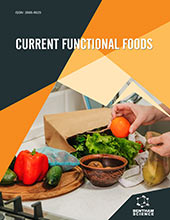
Full text loading...
The goji berry (Lycium spp.) belongs to the Solanaceae family. The genus Lycium comprises 87 recognized species and is distributed in arid and semi-arid regions in temperate to subtropical zones around the world. China is currently the greatest supplier of goji berry, or wolfberry, products in the world and commercial amounts of wolfberry are grown in this country. Goji berry is densely cultivated around the southwestern part of China. Recently, goji berry became a popular fruit in Turkey due to containing health beneficial compounds, especially phenolic compounds (phenolic acids and flavonoids), carotenoids, tocopherol, and ascorbic acid and having antioxidant properties. Lycium fruits were used as remedies since ancient times in Asian countries, especially in China, for their emmenagogue, diuretic, antipyretic, tonic, aphrodisiac, hypnotic, and hepatoprotective effects. After the discovery of the medicinal and aromatic characteristics of goji berry products, interest in goji berry has increased around the world. Goji berry is regarded as a superfood because of its nutrient profile. Especially in recent years, the goji berry has been cultivated and used widely as a medical aromatic plant in many European countries, following its use in Southeast Asian countries. In this chapter, adequate research is presented about goji berry in terms of botanical description, homeland, benefits to human health, and traditional uses.

Article metrics loading...

Full text loading...
References


